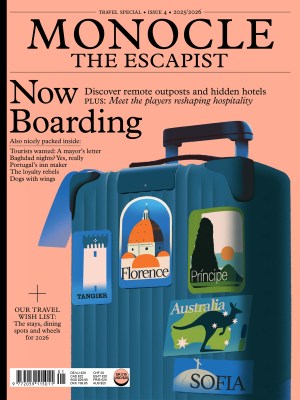Common thread: The school training India’s next generation of women weavers
Dior is just one of the luxury brands working with Chanakya School of Craft. This training ground has built a reputation for training women weavers in complex techniques. We see what yarns they’re spinning.
On the fifth floor of a corporate tower in the centre of Mumbai, sandwiched between IT and accounting firms, women sit around a spanking white table, diligently weaving golden thread through cotton. These are the students of the Chanakya School of Craft and they are practising zari, an embroidery style favoured by the ostentatious rulers of the Mughal era. When Monocle visits, the sun is falling over the airy classrooms, lending a milky glow to the skyline. An aura of quiet concentration pervades the space: the women are at the tail of their day, their fingers stitching and folding for hours already.
Neelam Bhujbal is a graduate of the second cohort to pass through the Chanakya School of Craft, which was established in 2016 by textile and embroidery house Chanakya International. She tells Monocle that zari and zardozi – a similar style, which uses metal bullion thread rather than gold – are her favourite of the 300 stitches and techniques learned during her studies. It’s the style, she says, of kings.
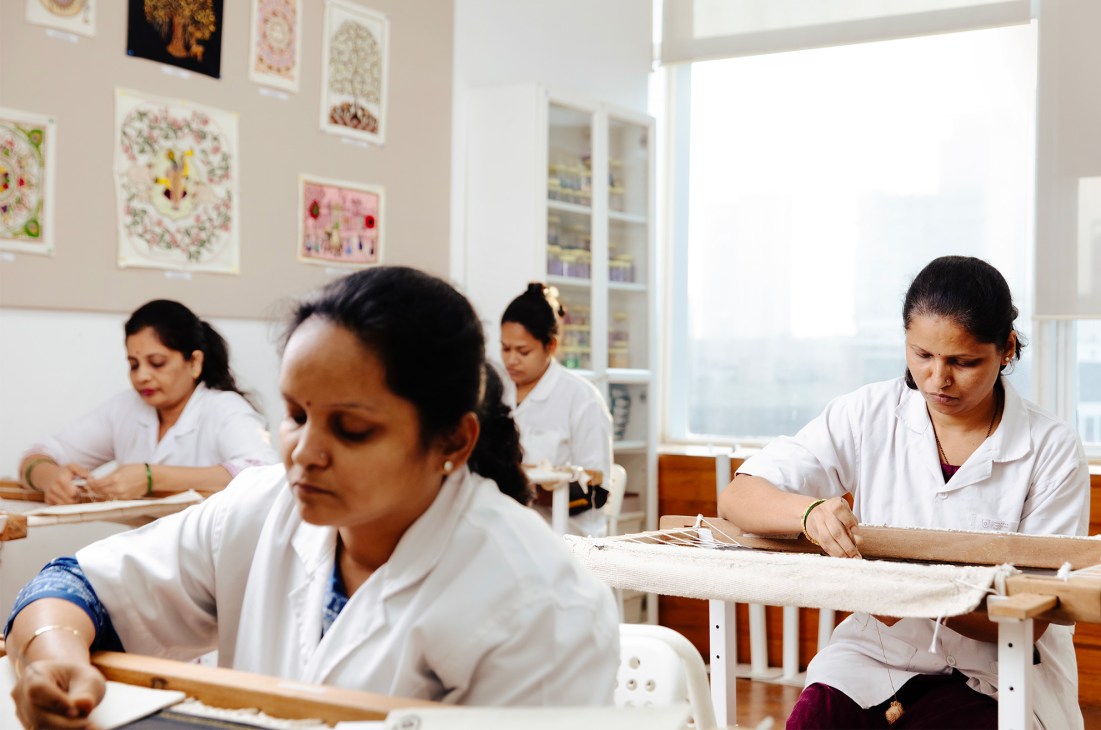
Bhujbal’s is a typical story: she was a housewife and stay-at-home mother before starting at the school, which she heard about through a neighbour. In fact, most women in the room discovered the craft training opportunity through a friend, sister-in-law or neighbour’s cousin. Word of mouth is the only recruitment strategy that matters here – and younger students are not the only target.
Bhujbal thrived during the 18-month course, whose teachings are contextualised with important women in history, including Frida Kahlo and Indian poet Sarojini Naidu. Now she works full-time at the Chanakya International atelier, which regularly collaborates with fashion houses such as Lanvin, Fendi, Valentino and Dior. The French house’s long-time creative director Maria Grazia Chiuri regularly commissions the Chanakya atelier to create tapestries for its runway show sets and hand embroidered gowns for couture collections. She was the first to suggest that the school open up to female students from underserved communities. “She has been instrumental in looking at craft through an expansive lens,” says Karishma Swali, artistic director of Chanakya International. She has developed a friendship with Chiuri over the past 30 years, born out of their mutual love of craft. The pair met in Rome in the mid-1990s, when Chiuri was still head of accessories at Fendi, and Swali was showcasing Chanakya’s designs to Italian fashion houses. The relationship has deepened since then, and Chiuri chairs the advisory board for the foundation and collaborates with Swali and the Chanakya School of Craft for artistic projects.

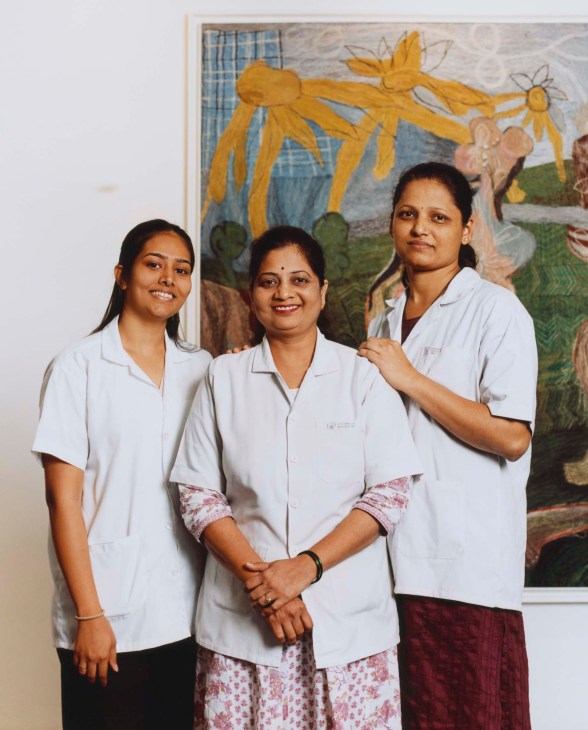
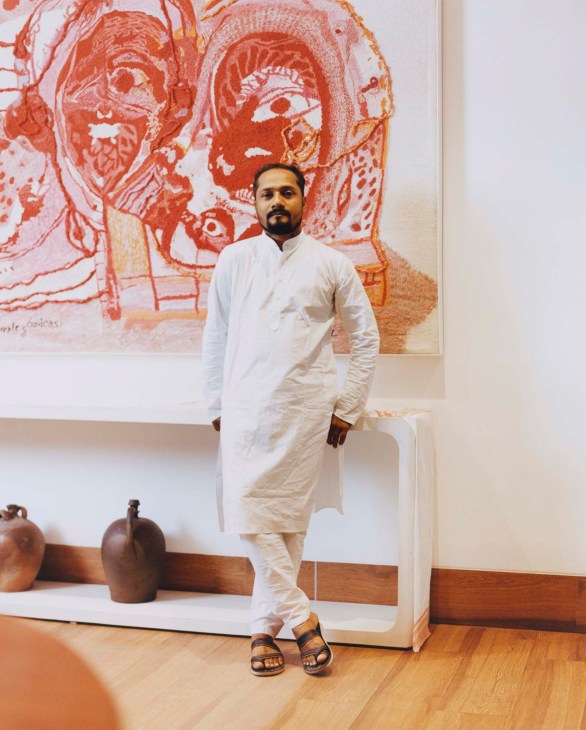
“We try to absorb as many graduates as possible in our atelier,” says Swali, referencing the 1,300 women who have passed through its programme since its inception. Others have gone on to start their own small businesses or work at different ateliers as seamstresses and artisans. Chanakya is SA8000 certified, meaning that its artisans are paid a “living wage” rather than minimum wage. This also means that it’s easier for students to balance multigenerational caregiving responsibilities with the hours required to receive certification. Students are given small honorariums to travel to and from their classes, which are free and can be taken either in the morning or the afternoon.

Swali funds the school using revenue from the design and manufacturing arms of the Chanakya International business. This is a worthwhile investment, as the training courses also double as talent incubators. She is adamant that these courses aren’t just intended to churn out technically proficient workers; they also form creatives who go on to build careers within the Chanakya atelier. “The way these women feel about themselves, once they see what they can make, once they see their work on a global stage – they really are artists,” she says. “They become custodians of these crafts. It’s incredible to see the change in them.”

The Chanakya atelier and corporate headquarters are a 30-minute drive from the company’s school, even with Mumbai’s notorious traffic. This is the engine room of the business, employing more than 1,000 artisans to execute commissions from the world’s top luxury fashion houses. “My role has been about creating a new language,” says Swali. “Balancing the skill of an artisan, with the DNA of a house. That’s really what I’ve been doing for the past two and a half decades.”
Chanakya HQ houses an archive gallery behind a heavy wooden door; this is a fashion enthusiast’s dream setting. Here is a pink netted Lanvin dress, fresh from the runway; a spangled Gucci gown that dances even in situ; a Dior frock that Natalie Portman once wore on the red carpet. Couture sits alongside retrieved historical artefacts, from mirror-worked petticoats (common to the northern states of Rajasthan and Haryana), to double-ikat weaves from Andhra Pradesh. The works are handled with deep precision and care, so even one stitch askew is noticeable. This is why the artisans of the past always included a single mistake in their work: perfection was said to be reserved for the gods.
A corseted gown, in what looks like, from afar, a pure silver thread, is one of the most intriguing pieces in Chanakya’s archives. On closer inspection, it is constructed entirely by an intricate network of filigree lace, woven by hand using a technique called chaand jaal. The gown demonstrates the unparalleled expertise of the school’s artisans, made using the precise geometry of the traditional Indo-Islamic style, though using a lighter and more durable alloy thread than the original 18th-century designs. These innovations are the work of Chanakya’s substantial merchandising and research teams, who travel the country studying craft traditions and reinterpreting them for modern wear.
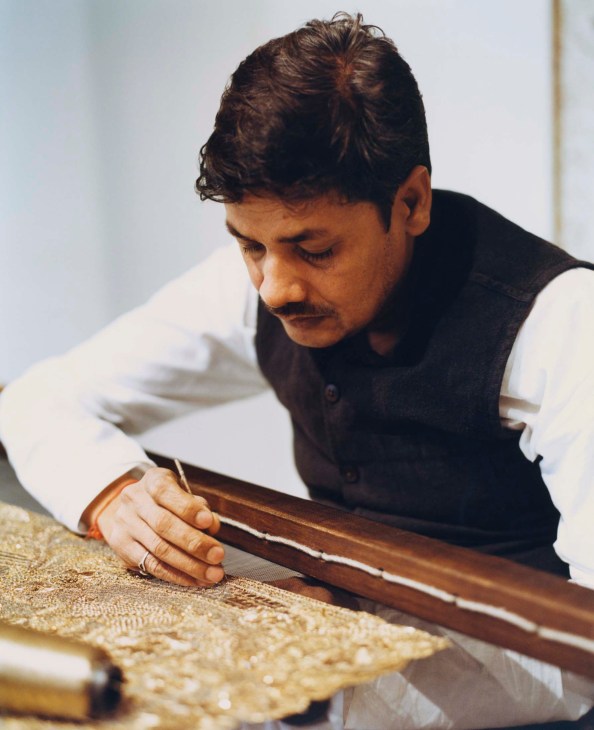

This unique creation first took to the runway as part of Dior’s pre-autumn 2023 show, which was held in front of Mumbai’s Gateway of India. The show marked the first at this historic location, thrusting the city into the collective global fashion consciousness. Local and global fashion luminaries were welcomed by a vast toran, the typical fabric door hanging in Hindu households across India, enlarged by Chanakya to reach 14 metres tall. Hundreds of students and master artisans were given creative license to experiment with patchwork creation’s design. “All of them used their own symbols of good luck,” says Swali. “We just let them create – and we ended up with this masterpiece.”
Chanakya’s work has also infiltrated the art world thanks to this increased visibility. Women at the School of Craft were commissioned to weave large multi-textile maps for En Route, an art show at the Vatican’s library until 2025 that celebrates women who have made incredible voyages through history. In 2024, Chanakya collaborated with painters Manu and Madhvi Parekh for a piece at the 60th Venice Biennale titled “Cosmic Garden”, which renders the Parekh’s watercolour designs in layered thread work on canvas. Most recently, Dior Couture dressed the set of its spring-summer 2025 runway show with a series of awe-inducing Chanakya-made tapestries, depicting the artworks of Rithika Merchant.
But fashion remains Chanakya’s bread and butter, with its atelier working to the beat of the global fashion calendar. The school doesn’t tend to cater to Indian luxury houses, most of which have their own in-houseateliers. Instead, its business comes from the West, with European brands increasingly looking to Chanakya’s ability to marry Indian craftsmanship with modern luxury aesthetics.

The team makes eight or nine collections a year, presenting swatches of new fabric designs to fashion houses in countries such as Italy, France, the UK and the US. Sometimes houses will come to Chanakya with mood-boards for their forthcoming shows. The process also works in reverse. “I was searching for ‘best in field’ for hand embroidery,” says Amber Keating, the founder of Common Hours, an Australian label known for its bold designs that are printed and embroidered onto heavy silk. At Chanakya, she found makers who were able to meet her vision for an “extreme abundance of detail”, employing a combination of Indian and Western techniques – including knots, macramé ties and layered embroidery – to create pieces that are tactile and full of movement. “Every piece is unique,” she says.
Collaboration and collectivism is certainly at the heart of the school. Swali wasn’t just handed the keys to the family business: before she started at Chanakya, she undertook a craft documentation at her father’s behest, tracking craft traditions in polar points of the coun- try. It was a lesson in understanding the interreliance of communities. “In Hinduism, there’s the idea of ‘purusha’,” says Swali. “It’s about being a small part of a whole, of the inherent interconnection of everything. That’s what I wanted to bring to Chanakya.”

It’s an unusual way to approach craftsmanship, particularly in India, where creative contributions of the artisans themselves are often overlooked, considered instead as the technical arms that manifest the vision of a designer. But here, there’s a heavy emphasis on creativity and vision – not least in the work of the women at the School of Craft. “They’re very impressive,” says Hanif Jamader, master artisan at Chanakya, who has been trained in craft since he was eight years old. “We try to teach them what we know but they’re creative in unusual ways. We learn from them too.” Jamader is an expert at drawn thread work, a particularly finicky embroidery style where threads are pulled from the warp and weft of the fabric to create mathematically precise designs that collapse if just one thread is pulled incorrectly.
This level of expertise, along with a taste for adventure and creative experimentation, has turned Chanakya into one of the luxury industry’s most sought-after manufacturing partners; its delicate, hand-embroidered creations fly from Milan to Paris to New York for season after season. “I haven’t travelled,” says Jamader. “But seeing the pictures of our designs around the globe, I feel like the world is coming to Chanakya.”


